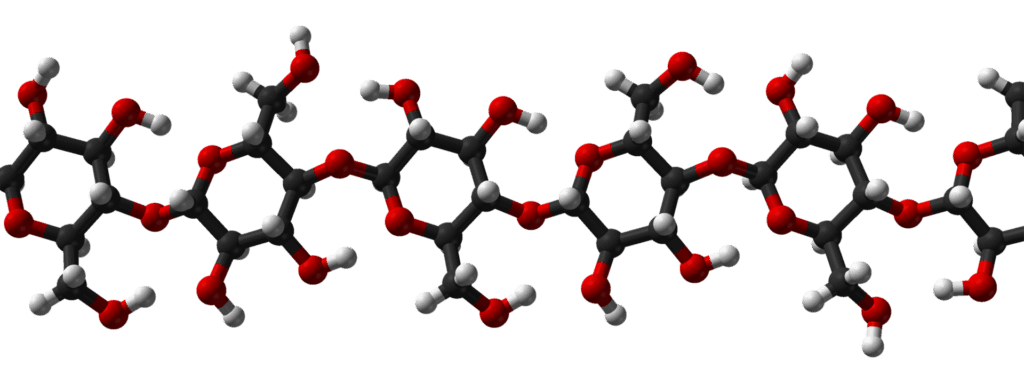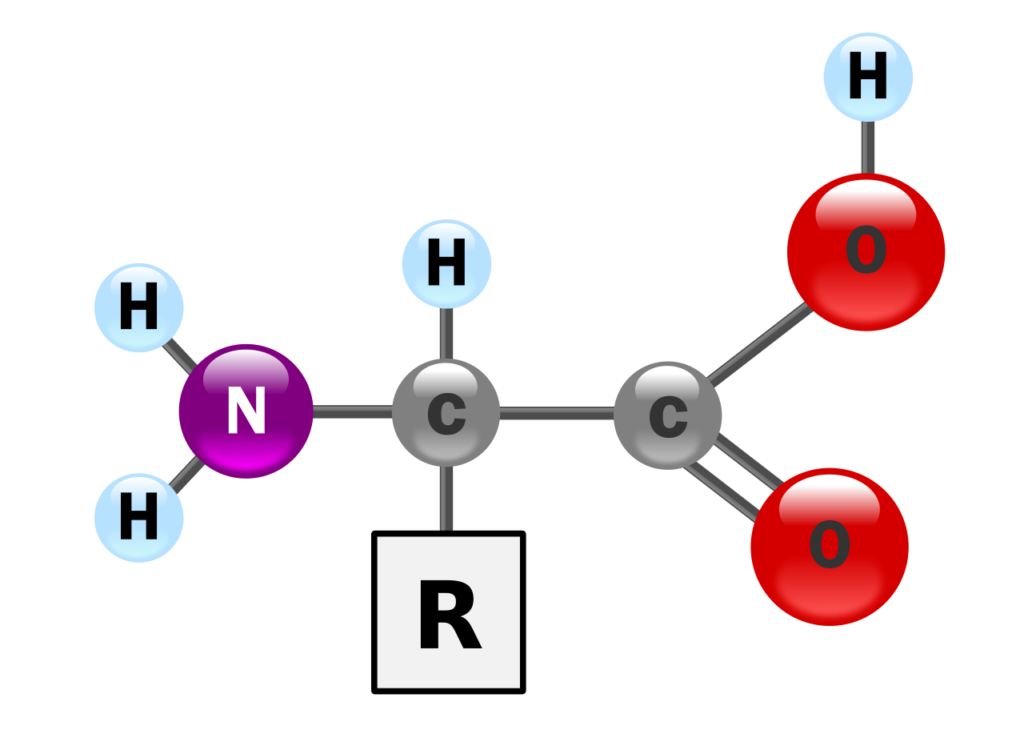Vitamin B Complex perform several biochemical functions and number of deficiency symptoms of vitamin B is observed, if consumed less than the requirement for prolonged period.
Vitamin B Complex is the group of eight essential vitamins: thiamine, riboflavin, niacin, pantothenic acid, pyridoxine, biotin, folic acid and cobalamin.
These vitamins are key players in numerous enzymatic reactions, acting as coenzymes that facilitate energy release through metabolism.
Additionally, they support nerve function, aid in DNA repair, contribute to cell division, and are involved in the production of red blood cells.

Biochemical roles and deficiency symptoms of vitamin B complex
Vitamin B1 (Thiamine)
- Thiamine is the first B-complex vitamin discovered while studying individuals with beriberi disease.
- It can be naturally produced by bacteria, fungi, and plants and is a colorless compound found in foods like cereals, groundnuts, pistachios, walnuts, mustard seeds, soybeans, and capsicum.
- Thiamine’s structure includes a pyrimidine ring and a thiazole ring, connected by a methylene group (CH₂). Known as a sulfur-containing vitamin due to its thiol (SH-) group, thiamine is converted in the human body to its active form, thiamine pyrophosphate.
Active form: Thiamin pyrophosphate (TPP) is active form of Thiamine.
Biochemical functions:
- TPP (thiamine pyrophosphate) plays a role in the dehydrogenation and decarboxylation processes in carbohydrate and amino acid metabolism.
- It is involved in the oxidative decarboxylation of α-ketoacids such as pyruvate, α-ketoglutarate, and those from branched-chain amino acids like leucine, isoleucine, and valine.
- TPP acts as a coenzyme in various enzymes, including transketolase, the pyruvate dehydrogenase complex, α-ketoglutarate dehydrogenase, and the branched-chain amino acid dehydrogenase complex.
Deficiency diseases and symptoms:
Thiamine deficiency leads to beriberi, which can present in three forms:
- Dry beriberi: Primarily involves neurological symptoms.
- Wet beriberi: Causes mental confusion, muscle wasting, and fluid retention (edema).
- Infantile beriberi: Mainly impacts an infant’s cardiovascular system, with common symptoms including muscle weakness, loss of sensation, vomiting, and confusion.
Beriberi primarily affects the nervous and cardiovascular systems, and treatment requires a diet or supplements rich in thiamine.
Vitamin B2 (Riboflavin)
- Riboflavin, also known as vitamin B2, is the second vitamin in the B-complex group.
- It is abundant in yeast, milk, liver, eggs, and leafy vegetables.
- Structurally, it consists of a ribose sugar and a flavin molecule with an isoalloxazine ring. Riboflavin has a bright yellow color and is commonly used as a food additive.
Active form: Flavin adenine dinucleotide (FAD) is a riboflavin derivative
Biochemical functions:
- Riboflavin plays a role in the metabolism of carbohydrates, fats, and amino acids.
- The coenzyme FAD, derived from riboflavin, is essential for electron transfer in various metabolic reactions.
- It serves as an electron carrier in oxidation-reduction reactions within oxidative phosphorylation, fatty acid and amino acid breakdown, and the citric acid cycle.
- FAD-dependent enzymes include the pyruvate dehydrogenase complex, α-ketoglutarate dehydrogenase complex, succinate dehydrogenase, acyl-CoA dehydrogenase, and glycine oxidase.
Deficiency diseases and symptoms:
- Riboflavin deficiency can cause symptoms such as fatigue, slowed growth, cheilosis, glossitis, dry and scaly skin (seborrheic dermatitis), impaired vision, and corneal inflammation.
Vitamin B3 (Niacin)
- The term “Niacin” collectively refers to nicotinamide and nicotinic acid and is also known as vitamin B3.
- Niacin is a non-toxic form derived from the toxic tobacco alkaloid nicotine.
- The amide form of nicotinic acid, known as nicotinamide, has a (CO-NH₂) group. Niacin was identified as a nutrient during research on pellagra disease and can be synthesized from the amino acid tryptophan.
- Rich sources of niacin include peanuts, legumes, meat, eggs, and milk.
Active forms: Nicotinamide adenine dinucleotide (NAD) and nicotinamide adenine dinucleotide phosphate (NADP) are active forms of niacin.
Biochemical functions:
- NAD and NADP function mainly as coenzymes that accept hydrogen and carry electrons in various metabolic oxidation and reduction reactions.
- These coenzymes are involved in over 200 cellular metabolic reactions. Oxidized NAD acts as an electron acceptor, while its reduced form, NADPH, serves as an electron donor in numerous biochemical processes.
- FAD- and NAD-dependent enzymes include dehydrogenase enzymes like lactate dehydrogenase, the pyruvate dehydrogenase complex, and α-ketoglutarate dehydrogenase.
- Additionally, NAD plays a significant role in DNA repair and the regulation of calcium ions in the body.
Deficiency disease and symptoms:
- Pellagra is caused by a deficiency of niacin.
- Initial symptoms include general weakness, loss of appetite, indigestion, and dizziness.
- Photosensitive dermatitis, skin infections, and digestive issues are also associated with niacin or tryptophan deficiency.
Vitamin B5 (Pantothenic acid)
- Pantothenic acid, also called vitamin B5. It is a peptide composed of β-alanine and pantoic acid and plays a key role in energy metabolism.
- Since the human body cannot produce pantothenic acid, it must be obtained from dietary sources such as whole grains, broccoli, avocados, cereals, and mushrooms.
Biochemical functions:
- Pantothenic acid is essential for forming coenzyme A (CoA), which consists of cysteine, pantothenic acid, and phospho-adenosine diphosphate.
- Pantothenic acid serves as a functional part of CoA, enabling it to carry acyl groups in various biochemical reactions, including fatty acid synthesis and carbohydrate and amino acid metabolism.
- CoA is part of the acyl carrier protein in fatty acid synthase, involved in fatty acid synthesis.
- It is also required for creating acetyl-CoA and succinyl-CoA during glucose oxidation and the Krebs cycle, as well as for acetylating choline to produce the neurotransmitter acetylcholine in the brain.
Deficiency disease and symptoms:
- Pantothenic acid deficiency is commonly associated with symptoms of low energy, such as fatigue and weakness.
Vitamin B6 (Pyridoxine)
- Vitamin B6, known as pyridoxine, includes a group of related compounds: pyridoxine, pyridoxamine, pyridoxal, and their phosphate forms.
- Its structure has a single pyridine ring, with pyridoxine containing a hydroxyl group, pyridoxamine an amino group, and pyridoxal an aldehyde group.
- Vitamin B6 is found in foods like eggs, liver, yeast, cereals, legumes, and milk.
Active form: The biologically active form of vitamin B6 is Pyridoxal-5- phosphate
Biochemical functions:
- Vitamin B6 is essential for the metabolism of amino acids, fatty acids, glycogen, and steroid hormones.
- Pyridoxal-5-phosphate acts as a coenzyme in numerous amino acid metabolic reactions, including transamination, deamination, decarboxylation, racemization, and aldol reactions.
- It is needed for transferring amino groups in the transamination process of amino acid metabolism.
- Enzymes dependent on pyridoxal-5-phosphate include aspartate transaminase, alanine transaminase, glutamic decarboxylase, and gamma-aminobutyric acid transaminase, all of which are involved in various metabolic pathways.
Deficiency diseases and symptoms:
- Clinical signs and symptoms of pyridoxine deficiency include anemia, dermatitis, peripheral neuropathy, gastrointestinal issues, nausea, and vomiting.
Vitamin B7 (Biotin)
- Biotin is a water-soluble vitamin, essential for cell growth and the metabolism of lipids and amino acids.
- Biotin’s structure includes an imidazole ring, a thiophene ring, and a fatty acid side chain.
- Common sources of biotin include yeast, nuts, tomatoes, meat, and egg yolks.
Active form: Biocytin
Biochemical functions:
- Biotin functions as a coenzyme for various carboxylase enzymes, including pyruvate carboxylase, acetyl-CoA carboxylase, and propionyl-CoA carboxylase.
- It plays a crucial role in transferring carbon dioxide (CO₂) during carboxylation reactions.
- Biotin is covalently attached to the enzyme through an amide linkage with a lysine residue, forming biotinyl-lysine or biotincytin.
Deficiency diseases and symptoms:
- Common deficiency symptoms of biotin include loss of appetite and growth, dermatitis, hair loss, and thickening of bones.
Vitamin B9 (Folic acid)
- The term “folic acid” comes from the Latin word “folium,” meaning “leaf.”
- It is also referred to as pteroylglutamic acid or folacin.
- Plants are particularly rich in folic acid, with spinach leaves being a notable source. Other significant sources of this vitamin include green vegetables, whole grains, cereals, yeast, soybeans, and eggs.
- Folic acid is composed of a pteridine ring, para-aminobenzoic acid (PABA), and glutamic acid.
Active forms: Tetrahydrofolate is active form of dietary folic acid
Biochemical functions:
- Tetrahydrofolic acid serves as a coenzyme in numerous biochemical reactions, particularly in the synthesis of amino acids and nucleic acids (DNA).
- It works closely with vitamin B12 in the production of red blood cells (RBCs) and the amino acid homocysteine.
- Additionally, 5,10-methylene tetrahydrofolate is necessary for the methylation and repair of nucleic acids, while 5-methyltetrahydrofolate is essential for synthesizing the amino acid methionine.
- Furthermore, folate is crucial for producing healthy red blood cells and helps prevent anemia, especially in infants and pregnant women.
Deficiency diseases and symptoms:
- Folic acid deficiency impacts the synthesis of nucleic acids and amino acids, and it is particularly common among pregnant women.
- A deficiency in either folic acid or vitamin B12 can result in megaloblastic anemia, which may cause clinical symptoms such as weakness, fatigue, depression, breathing difficulties, and neural tube defects in fetuses of pregnant women.
Vitamin B12 (Cobalamin)
- Vitamin B12, also known as cobalamin, contains a cobalt metal ion at the center of its corrin ring, making it the heaviest and most complex of all vitamins.
- It comprises a group of chemically related compounds called vitamers, which exhibit vitamin activity.
- Neither plants nor animals can synthesize vitamin B12; only bacteria possess the necessary enzymes for its production.
- Dietary sources of vitamin B12 include animal meat (especially liver), dairy products, eggs, and shellfish.
- This vitamin is essential for the normal functioning of the brain and nervous system, as well as for the formation of red blood cells (RBCs).
- For proper absorption in the human body, vitamin B12 requires a specific protein called intrinsic factor; a deficiency in this factor can lead to vitamin B12 deficiency.
- Vitamin B12 consists of a cobalt ion (Co³⁺), a corrin ring system, dimethylbenzimidazole (DMB), and 5-deoxyadenosine.
Active form: Methyl cobalamin and adenosyl cobalamin
Biochemical functions:
- Methylcobalamin and adenosylcobalamin are two coenzymes of vitamin B12 that play roles in amino acid metabolism and hemoglobin synthesis.
- Vitamin B12 functions as a coenzyme for two enzymes: methionine synthase and L-methylmalonyl-CoA mutase.
- It is involved in the transfer and rearrangement of methyl groups during various biochemical reactions.
Deficiency diseases and symptoms:
- The primary signs of vitamin B12 deficiency include pernicious anemia and neuropathy.
- Pernicious anemia is characterized by low hemoglobin levels, a reduced number of erythrocytes, and neurological symptoms.


